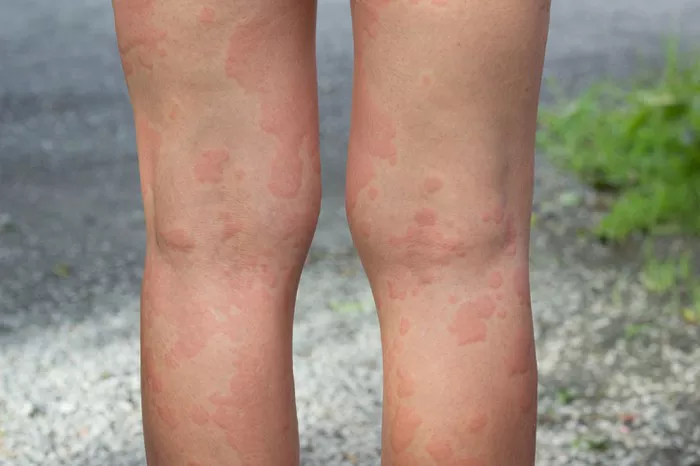Hives, medically known as urticaria, are a common skin condition characterized by itchy, raised welts or bumps. While most cases of hives are mild and short-lived, some individuals may experience severe hives that require immediate attention and management. Severe hives can significantly impact a person’s quality of life, causing discomfort, distress, and in rare cases, even life-threatening complications. Therefore, understanding how to effectively manage severe hives is crucial for both patients and healthcare providers.
Understanding Severe Hives:
Severe hives present as large, widespread welts that may merge together, covering significant areas of the body. These hives can be intensely itchy, painful, and may cause swelling, making daily activities challenging. In some cases, severe hives may be accompanied by other symptoms such as difficulty breathing, swelling of the face or throat, dizziness, and nausea. This severe form of hives, known as angioedema, requires prompt medical attention as it can lead to serious complications, including anaphylaxis.
Identifying Triggers:
One of the key steps in managing severe hives is identifying triggers that exacerbate the condition. Common triggers include:
1. Allergens: Certain foods, medications, insect stings, pollen, and pet dander can trigger an allergic reaction leading to hives.
2. Physical Factors: Exposure to heat, cold, pressure, or sunlight may trigger hives in some individuals.
3. Stress: Emotional stress or anxiety can exacerbate hives or trigger flare-ups.
4. Underlying Health Conditions: Conditions such as autoimmune disorders, thyroid disease, and infections may be associated with chronic hives.
Keeping a detailed record of symptoms and potential triggers can help patients and healthcare providers identify patterns and develop effective management strategies.
Immediate Treatment Measures:
When faced with severe hives, it is essential to take immediate steps to alleviate symptoms and prevent complications. Here are some recommended treatment measures:
1. Antihistamines: Over-the-counter or prescription antihistamines can help alleviate itching and reduce the severity of hives. Non-drowsy formulations are often preferred for daytime use, while sedating antihistamines may be beneficial for nighttime relief.
2. Topical Treatments: Calamine lotion, corticosteroid creams, or ointments can provide temporary relief from itching and inflammation when applied directly to the affected areas.
3. Cold Compresses: Applying cold compresses or ice packs to the affected skin can help reduce swelling, numb the area, and provide relief from itching.
4. Avoid Triggers: Identifying and avoiding triggers is crucial in preventing recurrent episodes of severe hives. Patients should be advised to steer clear of known allergens or precipitating factors whenever possible.
5. Seek Medical Attention: If hives are accompanied by severe symptoms such as difficulty breathing, swelling of the face or throat, or dizziness, immediate medical attention is warranted. These symptoms may indicate a potentially life-threatening allergic reaction (anaphylaxis) and require prompt treatment with epinephrine.
Long-Term Management Strategies:
In addition to immediate treatment measures, long-term management strategies are essential for individuals with recurrent or chronic severe hives. These may include:
1. Allergy Testing: Consultation with an allergist may be beneficial to identify specific allergens triggering hives through allergy testing, such as skin prick tests or blood tests.
2. Avoidance of Triggers: Once triggers are identified, patients should take proactive steps to avoid exposure whenever possible. This may involve dietary modifications, changes in medication, or environmental adjustments.
3. Medication Management: For individuals with chronic or recurrent severe hives, long-term treatment with prescription medications may be necessary to control symptoms. These may include oral antihistamines, corticosteroids, or other immunomodulatory agents prescribed under the guidance of a healthcare professional.
4. Stress Management: Incorporating stress-reduction techniques such as mindfulness, relaxation exercises, or therapy can help mitigate the impact of emotional stressors on hives.
5. Regular Follow-up: Patients with severe or chronic hives should maintain regular follow-up appointments with their healthcare providers to monitor symptoms, adjust treatment as needed, and address any concerns or complications promptly.
Conclusion
Severe hives can be a distressing and debilitating condition, but with proper management strategies and treatment options, individuals can effectively alleviate symptoms and improve their quality of life. By identifying triggers, implementing immediate treatment measures, and adopting long-term management strategies, patients can gain better control over their condition and minimize the frequency and severity of flare-ups. Collaboration between patients and healthcare providers is essential in developing personalized treatment plans tailored to individual needs and preferences. With diligence and perseverance, individuals with severe hives can effectively manage their condition and enjoy a better quality of life.
























